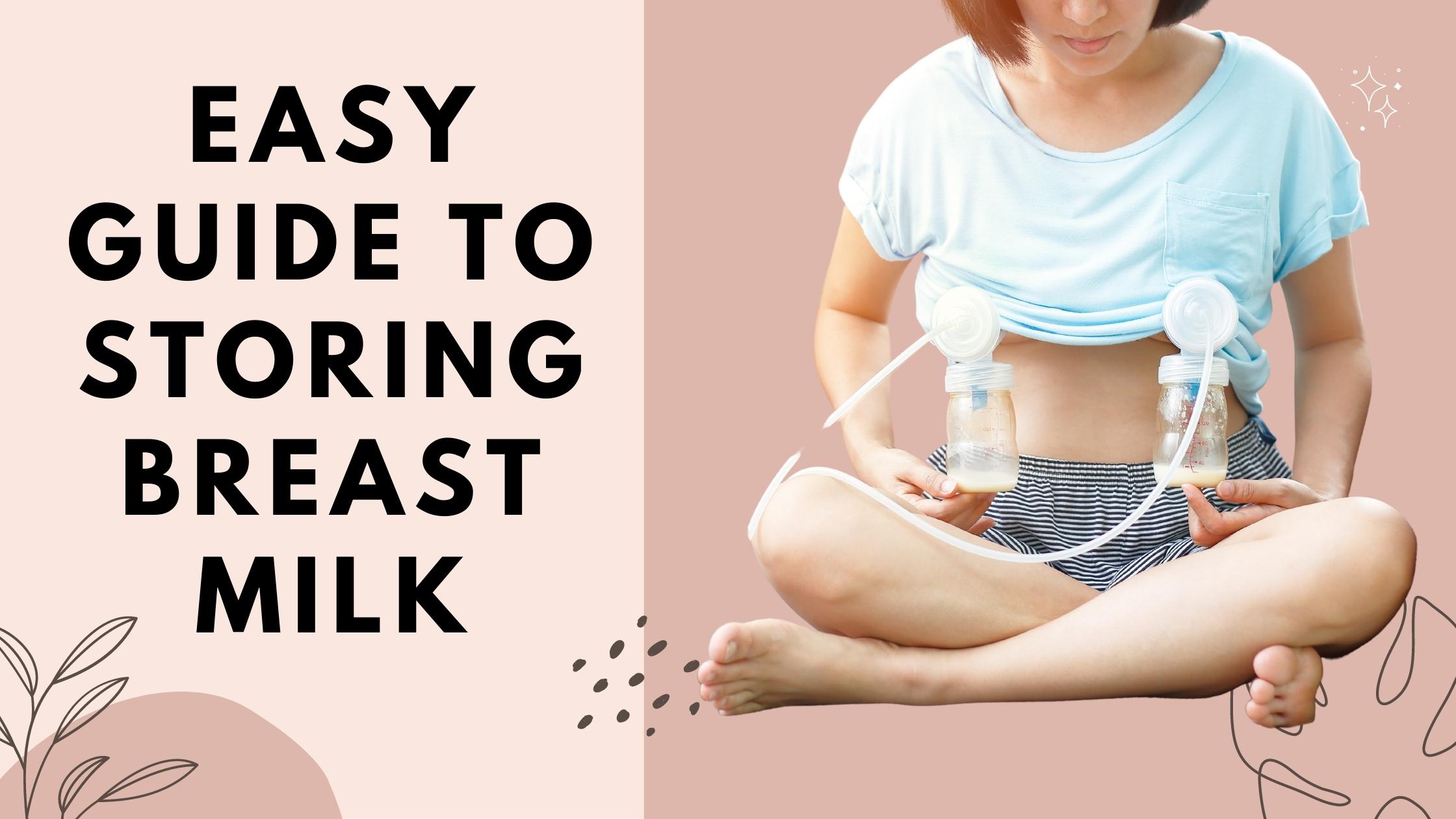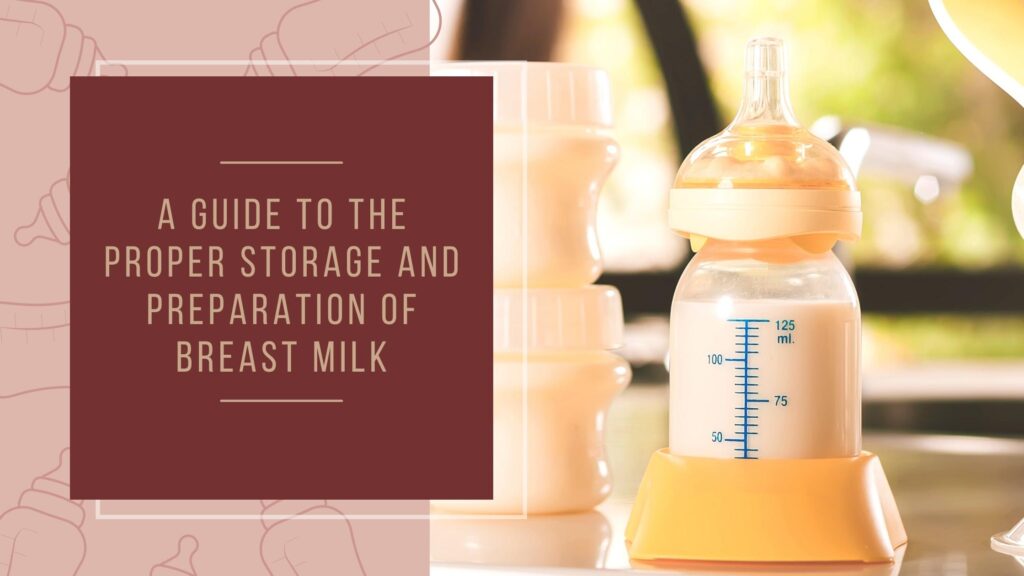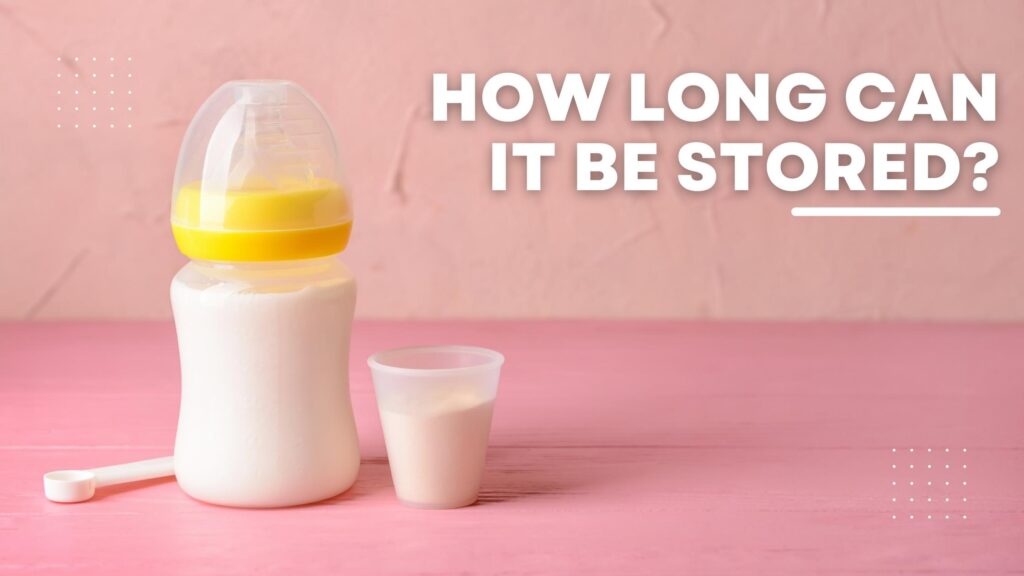Easy Guide to Storing Breast Milk

With this easy guide to storing breast milk, you will learn A-Z about the process of proper storage and preparation of breast milk. In today’s modern and hectic lifestyle the need to express and store breast milk has become necessary.
If you’re working or you want some relaxation and go out to pamper yourself but feel guilty about not being able to provide breast milk for your baby then worry not.
The challenge of breastfeeding does not come from the mother’s end only. Very often the babies give mamas the hard time in latching. They also refuse to breastfeed just because they’re not in the mood.
In such cases, breast pumps come in handy. There are certain things that will help you pump your breast milk safely and effectively.
Before pumping your milk make sure that you have washed your hands with soap and water. If these are not available, sanitize your hands with an alcohol-based sanitizer. Make sure that the parts of the pump and your breast area are clean.
If you’re having a hard time getting your milk to flow here are a few things that you can try for easy expression.
Try thinking of your baby. Look at a photo of your baby or bring something of the baby like a blanket near you. This will make you feel close to your baby and send signals to your brain for expressing the milk.
Alternatively, you can put a warm moist cloth on your breast. Massage your breasts and nipples gently. Most importantly stay calm and relaxed. It is okay if your breast milk doesn’t come pouring down in one go. For some women it takes time and it’s natural.
There are different ways of expressing milk and one can choose what suits them the best.

-
Hand expression
The first thing. In this, you express milk using your hands. You gently squeeze and press on your breasts to get the milk out.
The benefits of this process are that it is free of cost. It is always available at your disposal. In case of emergencies where you don’t have a breast pump, you can always rely on this method.
But, this method requires a certain level of practice. You will get the hang of it. It gets easier with time and practice. It can be as fast as pumping if you’ve learned the trick!
-
Manual breast
These pumps are another way of pumping your milk. In this method, you use your hand and wrist to operate a handheld device to pump milk. Some women find hand expressions better than a manual pump. But it is totally subjective and you can definitely give this method a try.
The price range of the product varies from brand to brand and the quality of the product. Make sure that you choose the best for your baby. Don’t compromise on the quality for a cheaper price as it might affect your baby’s health adversely.
You need to be extra careful with the sterilization of every part of the pump at regular intervals.
-
Electric pumps.
I can safely say that this is the go-to option for most mothers these days. The reason being they’re easier and faster. You can pump one or both breasts at the same time. It collects more milk in less time. This could be helpful if you are a working mother or are planning to complete your studies. Electric pumps run on batteries or need a place to plug in. Just like manual pumps, electric pumps also require cleaning in between uses.
The only con of these pumps is that they’re a little on the costlier end. But, I would go on to add that they are totally worth the one-time investment. It can make life easy for all the moms out there.
A Guide to the Proper Storage and Preparation of Breast milk

Proper storage and preparation of breast milk for a full-term baby depends on a number of factors like the type of breast milk, storage location, and temperature. All this information can make the process of storing breast milk a little confusing.
Here’s a trick that will make this task easy for you. Learn the ‘rule of 4s’. For freshly pumped milk you can store it for up to 4 hours at room temperature and up to 4 days in the refrigerator.
To prevent your breast milk from going to waste, always store it in small batches of approximately 60ML-120ML. If any milk is left after your baby’s feed is over you can use it for under 2 hours.
It can be used at the time of the next feed if it is immediately refrigerated.
Another thing to consider for proper storage and preparation of breast milk is the type of container. When storing breast milk it is advisable to use storage bags that are specifically made for this purpose. You can also use clean glass or hard BPA-free plastic bottles with tight-fitting lids. Do not use containers with recycling numbers 3 or 7 as they might have BPA which is not good. Do not use polythene bags or ordinary plastic packets for storage.
Tips

- Clearly label the packets with the date they were expressed on. Also mention the name of your baby on the packets if you’re also storing for donation purposes.
- Keep the bottle or packets at the back of the refrigerator or freezer and not in the door. This is to prevent the milk from thawing automatically.
- Do not fill the bottle or the packet up to the brim. Leave some space as the milk will expand when it freezes.
- Mixing freshly expressed milk with an already cooled or frozen batch is not advised. This can rewarm the older one. It is always best to first cool the fresh batch before mixing. It is also important to consider storage duration guidelines. if you mix a fresh batch with an older batch, the duration of the storage should be based on when the older batch was first stored.
How long can it be stored?

- At room temperature- If you have freshly pumped then you can use it for up to four hours if kept in a cool dry place at room temperature no warmer than 25 degrees Celsius.
- Refrigerator- When refrigerated at the back it can last up to 4 days. Just don’t forget it’s back there!
- Thawed or previously frozen milk can stay at room temperature for one two hours before it goes to the drain which you would not want. So take out only the quantity that is required by your baby.
It can stay up to 24 hours in the refrigerator before you have to throw it away. So only take out what you might think your little one might need in a day.
- Deep freezer- A note for moms is that a fresh batch of expression can be stored at the back of the deep freezer for up to 12 months. However, using it within six months is optimal.
- Insulated Cooler- It can be stored for up to 1 day in an insulated cooler with ice packs.
Tips for thawing and warming

I Thaw the oldest one first. Breast milk doesn’t necessarily need to be warm. Some moms prefer feeding at room temperature while some prefer cold.
Thaw the bottle or the packet by keeping it in the refrigerator door overnight. If you decide on warming it then place the bottle or the packet in a bowl of warm water or run it under warm water.
Microwaving it is not safe. Swirl it before feeding to mix the fat that might have separated. Do not shake it. Use it within 24 hours from when the milk is no longer frozen.
Once it is thawed at room temperature or warmed up, use it within two hours. Do not refreeze it after being thawed once.
Storage technique for NICU and hospitalized babies.

It is a tough time when you are not able to hold your baby close to you and feel that warmth of the baby when you put them close to your chest for the feed. But don’t stress out everything will be okay.
The important thing to focus on right now is to get your feed to the baby. The above-mentioned ways of storage and preparation of breast milk are suitable for a healthy and full-term baby.
Storage guidelines are stricter for babies who are hospitalized or have weaker immune systems. Here are some general things to keep in mind.
- The label on your container should clearly have your baby’s name on it. It should also carry the date and time of day you pumped. It should also carry information such as any medicine or substance that you have been exposed to since the last pumping session.
- Freshly pumped expressions for preterm or hospitalized infants should be used within one hour or refrigerated. Thawed or previously frozen expressions should be used within 24 hours (if thawed in the refrigerator) or within 2 hours (if warmed).
There are dedicated refrigerators and freezers in the hospital for this purpose.
- Always discuss the recommended storage guideline for your situation with your baby’s health care provider. They might have more specific instructions for you to follow at their hospital.
How to know when it’s time to say bye-bye to your hard work and put that batch of expression aside?

If you know what rotten milk smells like you will easily know when your batch of breast milk has gone stale.
If you are not able to understand through your smell sensory then try tasting it. If it tastes sour, then it’s bad and you need to toss it away.
Another trick is to look at it. Watch how it moves. If it is still good, it mixes back together easily with a gentle swirl of the bottle.
If it doesn’t mix properly or has chunks floating in it, throw it out.
The arrival of a new member needs to be celebrated, so here’s a guide to everything you need to know about the celebration.
Takeaway
Breast milk is an important source of nutrition for your baby. It is healthier than baby food.
Following the guideline for the proper storage and preparation of breast milk as discussed above will help you keep its supply up and will keep your baby full and happy even when you are not around. It is a very healthy practice. the more you express the more the quantity of your milk will increase and become better.
Wishing you all a happy motherhood!
